
Celebrate the Rich Tapestry of Italy: A Guide to Italian Holidays and Traditions
Jan 17, 2024
Italy, a country known for its rich cultural heritage, boasts a calendar filled with vibrant holidays and cherished traditions. From religious celebrations to festive rituals, each event contributes to the colorful mosaic that defines Italy's cultural identity. Let's take a journey through the Italian calendar, highlighting key dates and the unique traditions associated with each.
1. La Befana - January 6th
La Befana is a beloved figure in Italian folklore and is celebrated on the eve of the Epiphany, which falls on January 5th. La Befana is often depicted as a kindly old woman who travels on a broomstick, leaving gifts and sweets for children throughout Italy.
Here are some key points about La Befana in Italy:
- Legend and Origins: According to tradition, La Befana was an elderly woman who was visited by the Three Wise Men during their journey to Bethlehem to find the baby Jesus. They asked her for directions and invited her to join them, but she declined, saying she was too busy with her household chores. Later, she regretted her decision and set out to find the Christ child, carrying gifts. However, she was unable to find him. As a result, every year on the eve of the Epiphany, she visits children's homes, leaving gifts in the hope of finding the Christ child.
- Gift-Giving Tradition: Children in Italy eagerly anticipate the arrival of La Befana on the night of January 5th. They hang stockings or leave out shoes by the fireplace or windowsill, hoping that La Befana will fill them with candies, chocolates, and small gifts if they have been good, or coal or garlic if they have been naughty.
- Cultural Celebrations: La Befana is celebrated with various customs and traditions across Italy. In some regions, there are parades and festivities featuring people dressed as La Befana, while in others, families gather to share special meals and exchange gifts. In Rome, there is a traditional Epiphany parade featuring costumed performers and floats.
- Symbol of Generosity and Kindness: La Befana is considered a symbol of generosity, kindness, and the spirit of giving. Her story teaches the importance of hospitality, compassion, and the joy of giving without expecting anything in return.
- Continued Popularity: Despite the commercialization of Christmas and the introduction of Santa Claus, La Befana remains a beloved and enduring figure in Italian culture. Her legend has been passed down through generations and continues to be celebrated by Italians of all ages as a cherished part of their holiday traditions.
In summary, La Befana is a beloved and iconic figure in Italian folklore, embodying the spirit of generosity, kindness, and the joy of giving during the holiday season.
-> Check this interesting article if you love music: THE BUSKERS FESTIVAL
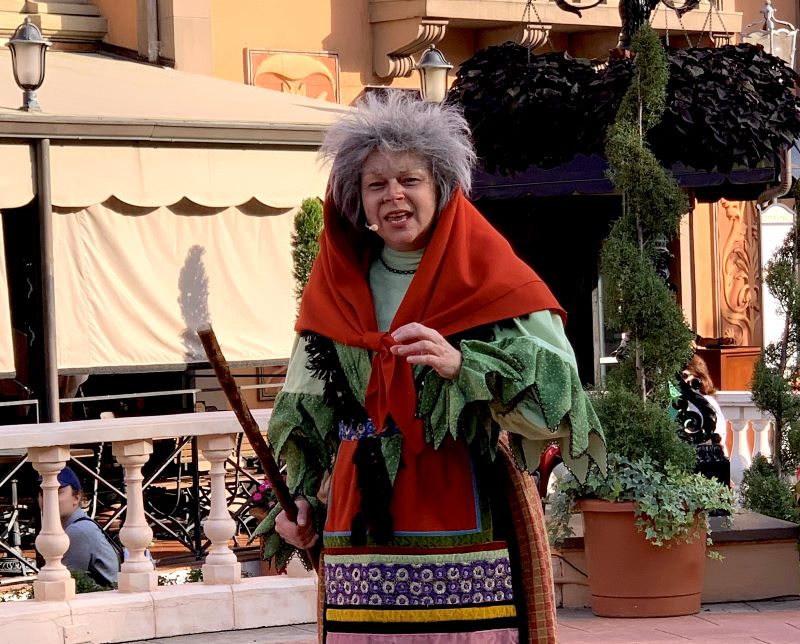 :
:
2. Carnevale - Dates Vary (February or March)
Carnevale in Italy is a vibrant and colorful festival celebrated in various cities and regions throughout the country. It typically occurs in the weeks leading up to Lent, with festivities culminating on Shrove Tuesday, also known as Fat Tuesday or Martedì Grasso.
Here are some key aspects of Carnevale in Italy:
- Venice: Venice is perhaps the most famous destination for Carnevale celebrations. The city's festivities date back centuries and feature elaborate masks, costumes, and grand masquerade balls. Visitors and locals alike take to the streets to participate in parades, street performances, and competitions for the best costumes and masks.
- Viareggio: The coastal town of Viareggio in Tuscany hosts one of Italy's most renowned Carnevale events. It is known for its gigantic papier-mâché floats depicting political satire, caricatures of celebrities, and current events. The parade attracts thousands of spectators each year.
- Ivrea: In the town of Ivrea in northern Italy, Carnevale is celebrated with the Battle of the Oranges. Participants divide into organized teams representing different historical groups and engage in a spirited orange-throwing battle, commemorating a historic revolt against tyranny.
- Putignano: The town of Putignano in Puglia boasts one of the oldest Carnevale celebrations in Italy, dating back over 600 years. It features parades, concerts, and theatrical performances, including the traditional figure of "Farinella," a local character representing abundance and fertility.
- Food and Traditions: Carnevale in Italy is also a time for indulging in traditional foods such as fried pastries like chiacchiere and castagnole, as well as regional specialties like Venetian frittelle and Neapolitan sfogliatelle. It's a time of feasting and revelry before the solemn period of Lent begins.
Overall, Carnevale in Italy is a joyous and festive occasion that showcases the country's rich cultural heritage, creativity, and sense of community.
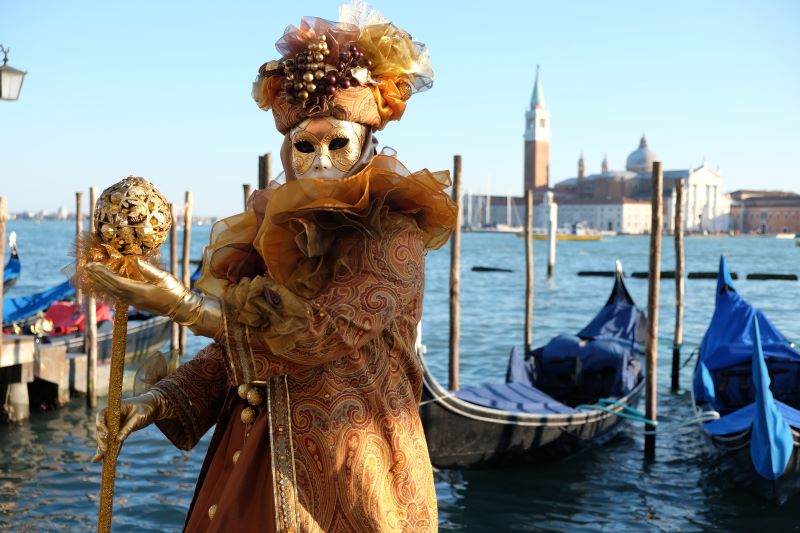
3. Easter - Dates Vary (March or April)
Easter in Italy, known as "Pasqua," is one of the most important and cherished religious holidays in the country. It is a time of deep spiritual significance and vibrant cultural traditions. Here are some key aspects of Easter celebrations in Italy:
- Religious Observances: Easter commemorates the resurrection of Jesus Christ, and Italians observe the holiday with religious services, processions, and ceremonies. Many attend Mass at churches across the country, with some of the most famous services held at the Vatican in Rome, where the Pope delivers special Easter blessings.
- Holy Week: The week leading up to Easter Sunday, known as Holy Week or "Settimana Santa," is marked by solemn processions, reenactments of the Passion of Christ, and devotionals in churches. Each region and city in Italy has its own unique customs and rituals during Holy Week.
- Traditional Foods: Easter is a time for feasting and enjoying special foods with family and friends. One of the most iconic Easter dishes is "colomba di Pasqua," a dove-shaped cake similar to panettone, often adorned with almonds and sugar. Other traditional foods include lamb, artichokes, and various regional specialties.
- Easter Monday: The day after Easter Sunday, known as "Pasquetta" or Easter Monday, is a public holiday in Italy. Many Italians spend Pasquetta outdoors, enjoying picnics, festivals, and gatherings with loved ones. It's a time for relaxation and leisure after the solemnity of Holy Week.
- Regional Traditions: Italy's diverse regions and cities have their own unique Easter traditions. For example, in Florence, there is the historic "Scoppio del Carro" or "Explosion of the Cart," where a cart filled with fireworks is ignited in front of the Duomo to ensure a good harvest. In Sicily, elaborate processions and reenactments are held in towns such as Trapani and Enna.
Overall, Easter in Italy is a time of spiritual reflection, community, and celebration, where ancient traditions and modern customs come together to honor the resurrection of Christ and the arrival of spring.

4. Liberation Day (Festa della Liberazione) - April 25th
Liberation Day, known as "Festa della Liberazione" in Italian, is celebrated on April 25th in Italy. It commemorates the end of the Nazi occupation and fascist rule during World War II. Here are some key points about Liberation Day in Italy:
- Historical Significance: Liberation Day marks the day in 1945 when Italian partisans, resistance fighters, and Allied forces succeeded in liberating Italy from Nazi occupation and the fascist regime of Benito Mussolini. The liberation of Italy led to the end of World War II in the country and the eventual establishment of a democratic republic.
- Symbol of Freedom and Resistance: Liberation Day is a symbol of freedom, democracy, and the resilience of the Italian people in the face of oppression. It honors the sacrifices made by those who fought against fascism and tyranny, including members of the Italian resistance movement and Allied soldiers.
- Public Commemorations: Throughout Italy, Liberation Day is marked by various public commemorations, ceremonies, and events. These include official ceremonies, wreath-laying ceremonies at memorials and monuments dedicated to the resistance, and parades featuring veterans, military units, and civic organizations.
- Cultural and Educational Activities: Liberation Day also serves as an occasion for cultural and educational activities that reflect on Italy's wartime history, the resistance movement, and the struggle for freedom and democracy. Schools, museums, and cultural institutions may organize exhibitions, lectures, film screenings, and discussions related to this period of Italian history.
- National Holiday: Liberation Day is a national holiday in Italy, and many businesses, schools, and government offices are closed to observe the occasion. It is a day for reflection, remembrance, and celebration of the values of liberty, democracy, and solidarity.
Overall, Liberation Day is a significant and poignant day in Italy's history, commemorating the country's liberation from fascist rule and the triumph of freedom over oppression. It continues to be an important reminder of the sacrifices made for democracy and the ongoing struggle for human rights and social justice.
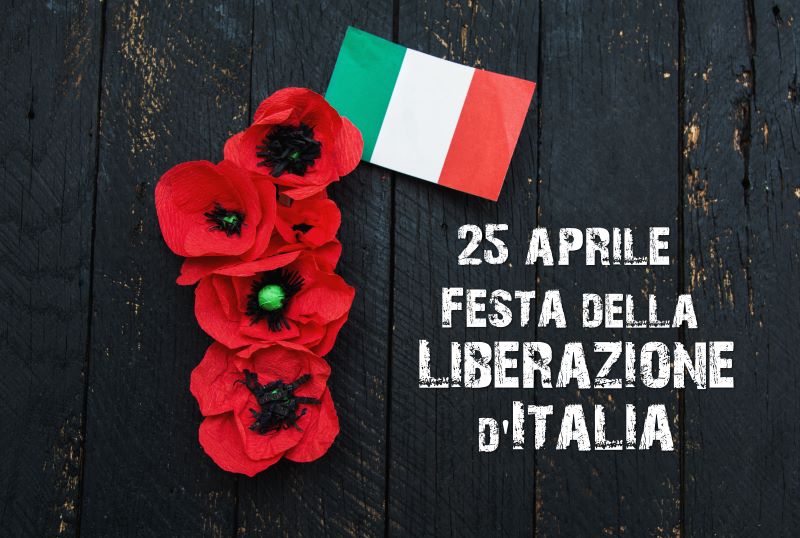
5. Labor Day (Festa dei Lavoratori) - May 1st
Labor Day in Italy, known as "Festa dei Lavoratori" or "Festa del Lavoro," is celebrated on May 1st. It is a public holiday that honors the achievements and contributions of workers across the country. Here are some key points about Labor Day in Italy:
- Historical Origins: Labor Day has its roots in the international labor movement and the struggle for workers' rights. It commemorates the Haymarket affair, which occurred in Chicago, USA, in 1886, where workers protested for an eight-hour workday. The event sparked labor movements around the world, including in Italy.
- Symbol of Solidarity: Labor Day is a symbol of solidarity among workers and a reminder of the importance of labor rights, fair wages, and safe working conditions. It is a day to recognize the efforts and sacrifices of workers in various industries, including manufacturing, agriculture, services, and more.
- Celebrations and Demonstrations: In Italy, Labor Day is marked by various celebrations, demonstrations, and events organized by trade unions, workers' associations, and political parties. These may include rallies, marches, concerts, cultural performances, and speeches advocating for workers' rights and social justice.
- Political and Social Significance: Labor Day is also a platform for addressing contemporary labor issues and advocating for policy changes to improve working conditions, job security, and social welfare programs. It provides an opportunity for workers to voice their concerns and demands to government authorities and employers.
- National Holiday: Labor Day is a national holiday in Italy, and most businesses, schools, and government offices are closed for the day. It is a time for workers to rest, spend time with family and friends, and participate in community events that celebrate their contributions to society.
Overall, Labor Day in Italy is a day of recognition, reflection, and mobilization for workers' rights and social justice. It reflects the country's commitment to upholding labor standards and promoting a fair and equitable society for all.

6. Republic Day (Festa della Repubblica) - June 2nd
Republic Day in Italy, known as "Festa della Repubblica," is celebrated on June 2nd each year. It commemorates the day in 1946 when Italians voted in a referendum to abolish the monarchy and establish the Italian Republic.
Here are some key points about Republic Day in Italy:
- Historical Significance: Republic Day marks a pivotal moment in Italian history when the citizens of Italy chose to transition from a monarchy to a republic. Following the referendum held on June 2nd, 1946, Italy officially became a republic, leading to the end of the Savoy monarchy.
- Democratic Principles: Republic Day symbolizes the principles of democracy, sovereignty, and popular sovereignty. It reflects the people's desire for self-governance and the establishment of a government based on the will of the citizens.
- Commemorative Events: Republic Day is celebrated throughout Italy with various events, ceremonies, and festivities. These may include official ceremonies attended by government officials, military parades, flag-raising ceremonies, cultural performances, concerts, and fireworks displays in cities and towns across the country.
- National Holiday: Republic Day is a national holiday in Italy, and it is observed with enthusiasm and patriotism. Government offices, schools, and many businesses are closed for the day to allow people to participate in the celebrations and reflect on the significance of the Italian Republic.
- Symbol of Unity: Republic Day serves as a symbol of national unity and solidarity among the Italian people. It is a time to honor Italy's history, culture, and achievements as a democratic republic, as well as to reaffirm the country's commitment to democracy, freedom, and the rule of law.
Overall, Republic Day in Italy is a momentous occasion that celebrates the values of democracy and freedom, as well as the resilience and spirit of the Italian people. It is a time for reflection, remembrance, and national pride.
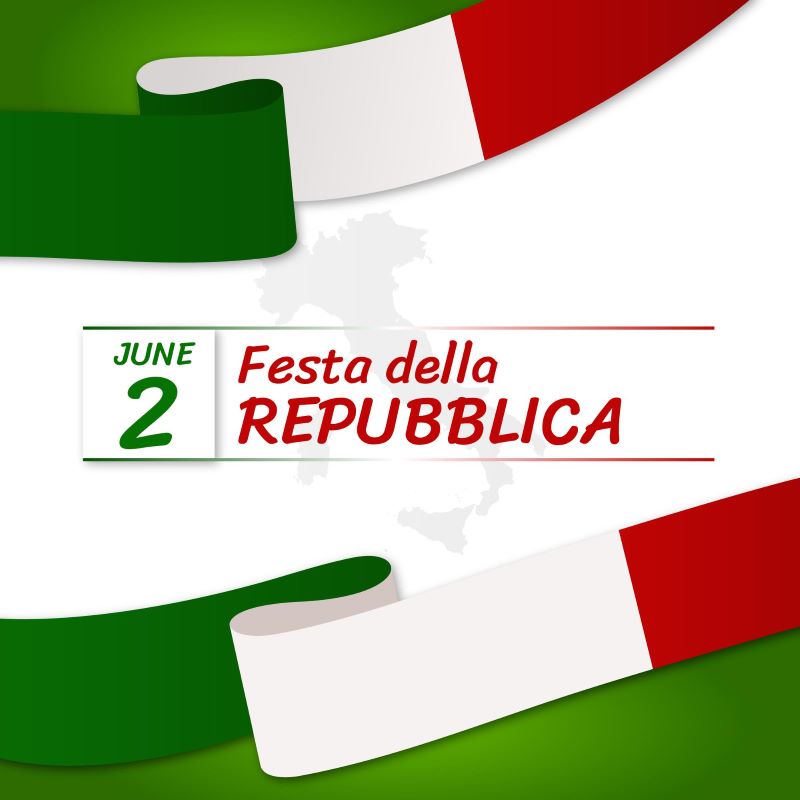
7. Ferragosto - August 15th
Ferragosto is a traditional Italian holiday celebrated on August 15th. It originated as a festival in ancient Rome dedicated to the Roman Emperor Augustus, which eventually merged with the Catholic feast of the Assumption of Mary. Here are some key points about Ferragosto in Italy:
- Summer Celebration: Ferragosto marks the peak of the summer season in Italy and is one of the most anticipated holidays of the year. It is a time when many Italians take their annual summer vacation and enjoy time with family and friends.
- Vacation Time: Ferragosto is associated with a period of relaxation, leisure, and travel. Many businesses, shops, and offices close for the holiday, allowing people to escape the heat of the cities and retreat to the coast, mountains, or countryside for a break.
- Outdoor Activities: On Ferragosto, Italians often engage in outdoor activities such as picnics, barbecues, beach outings, hiking, and sightseeing. It is common for families and friends to gather for meals, festivities, and cultural events in parks, piazzas, and public spaces.
- Traditional Foods: Ferragosto is also a time for indulging in traditional summer foods and drinks. Popular dishes include grilled meats, seafood, pasta salads, fresh fruits, gelato, and refreshing beverages like prosecco and spritz.
- Local Festivals: Across Italy, many towns and villages hold Ferragosto festivals and events featuring live music, dance performances, fireworks displays, and street markets. These celebrations showcase the rich cultural heritage and traditions of different regions.
- Religious Observances: While Ferragosto has pagan origins, it also has religious significance as the Feast of the Assumption of Mary. Catholics attend Mass and participate in religious processions to honor the Virgin Mary's ascension into heaven.
- Modern Customs: In contemporary Italy, Ferragosto remains a beloved holiday that embodies the spirit of summer, relaxation, and community. It is a time for Italians to recharge, reconnect with loved ones, and enjoy the beauty of their country's landscapes and traditions.
Overall, Ferragosto is a cherished cultural phenomenon in Italy that encapsulates the essence of summertime leisure, festivities, and togetherness.
-> Check this article for more celebrations: ITALIAN HOLIDAYS DURING OCTOBER
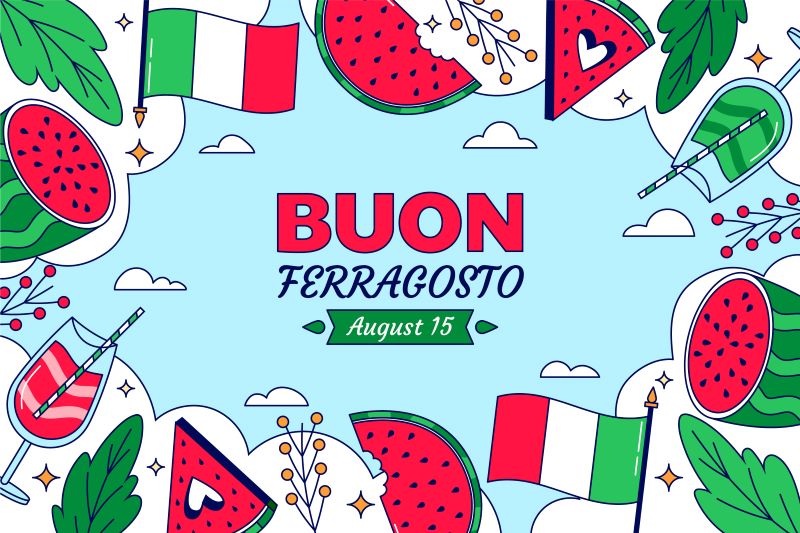
8. All Saints' Day (Ognissanti) - November 1st
All Saints' Day, known as "Ognissanti" in Italian, is a significant religious holiday celebrated on November 1st in Italy. Here are some key points about All Saints' Day in Italy:
- Religious Significance: All Saints' Day is a solemn occasion in the Catholic Church dedicated to honoring all the saints, both known and unknown, who have attained heaven. It is a day to remember and pay tribute to the exemplary lives and contributions of these holy individuals.
- Observances: On All Saints' Day, Catholics attend Mass and participate in religious services held at churches throughout Italy. Many people visit cemeteries to pay their respects to deceased loved ones by cleaning and decorating graves with flowers, candles, and wreaths.
- Cultural Traditions: In addition to its religious significance, All Saints' Day is also intertwined with various cultural customs and traditions in Italy. Families gather together to share meals and spend time in fellowship, reflecting on the memories of departed relatives and ancestors.
- All Souls' Day: All Saints' Day is closely followed by All Souls' Day, observed on November 2nd. On this day, Catholics pray for the souls of the departed, especially those in purgatory, who are believed to be undergoing purification before entering heaven.
- Autumnal Atmosphere: All Saints' Day coincides with the autumn season in Italy, characterized by cooler temperatures, falling leaves, and shorter days. The holiday serves as a reminder of the transient nature of life and the cycle of renewal and remembrance.
- Regional Customs: Different regions of Italy may have unique customs and observances associated with All Saints' Day. For example, in Sicily, families prepare special dishes such as "frittelle" (fried dough) and "pani r'ovu" (bread shaped like an egg) to commemorate the holiday.
Overall, All Saints' Day in Italy is a time for solemn reflection, prayer, and remembrance, as well as a celebration of faith, family, and cultural heritage. It provides an opportunity for Italians to honor the memory of the saints and departed loved ones while reaffirming their beliefs in the afterlife and the communion of saints.
-> Check this article for more celebrations: ITALIAN HOLIDAYS DURING NOVEMBER

9. Christmas - December 25th
Christmas in Italy, known as "Natale," is a joyous and festive holiday celebrated with religious observances, cultural traditions, and delicious food. Here are some key points about Christmas in Italy:
- Religious Significance: Christmas commemorates the birth of Jesus Christ, and it holds deep religious significance for Italians, the majority of whom are Catholic. The holiday is marked by Masses, church services, and nativity scenes, which depict the story of the Nativity.
- Advent Season: The Advent season leading up to Christmas is a time of preparation and anticipation. Many Italians observe Advent by attending special Masses, lighting Advent candles, and participating in devotional practices to spiritually prepare for the celebration of Christ's birth.
- Nativity Scenes: Presepi, or nativity scenes, are an integral part of Italian Christmas traditions. Homes, churches, and public squares are adorned with intricate nativity scenes featuring figurines of Mary, Joseph, the baby Jesus, shepherds, angels, and animals. Some cities, such as Naples, are renowned for their elaborate nativity scenes.
- Feast of the Seven Fishes: In many regions of Italy, Christmas Eve is celebrated with a traditional dinner known as the Feast of the Seven Fishes ("La Vigilia"). This seafood feast typically includes a variety of fish and seafood dishes, such as baccalà (salted cod), shrimp, calamari, and clams.
- Midnight Mass: Midnight Mass, or "La Messa di Mezzanotte," is a cherished Christmas tradition in Italy. It is a solemn and joyous occasion where families gather at churches to celebrate the birth of Christ with prayers, hymns, and the Eucharist.
- Gift-Giving: In Italy, gifts are exchanged on Christmas Day, often brought by "Babbo Natale," the Italian equivalent of Santa Claus. Children eagerly await the arrival of Babbo Natale, who delivers presents to good boys and girls on the night of December 24th.
- Traditional Foods: Christmas Day is celebrated with a festive meal that varies by region but often includes dishes such as panettone (a sweet bread), pandoro (a golden cake), torrone (nougat), and a variety of regional specialties. Families gather to enjoy a leisurely meal together, often accompanied by wine and festive desserts.
Overall, Christmas in Italy is a time of faith, family, and tradition. It is a season of warmth, generosity, and celebration as Italians come together to honor the birth of Jesus Christ and to create cherished memories with loved ones.
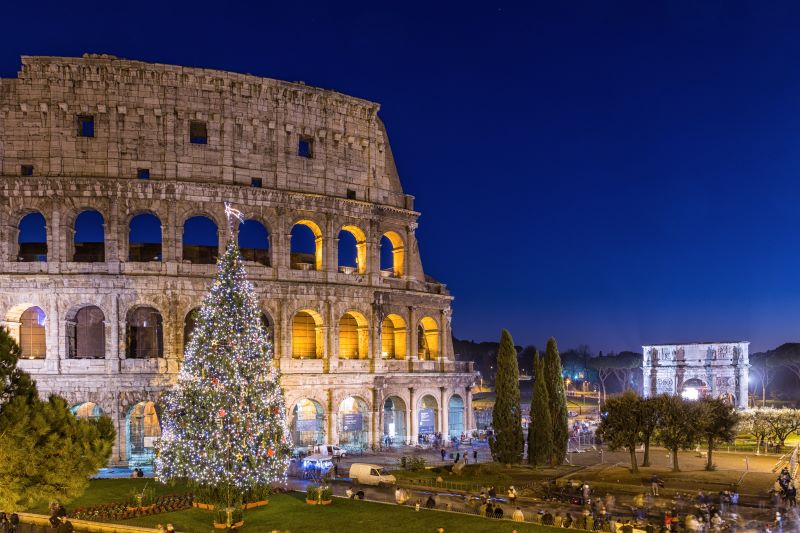
10. Sagra Festivals:
Sagra festivals are traditional Italian celebrations that highlight local food, culture, and traditions. Here are some key points about Sagra festivals in Italy:
- Local Celebrations: Sagra festivals are community events that celebrate the unique culinary and cultural heritage of specific regions, towns, or villages in Italy. Each Sagra typically focuses on a particular food or agricultural product that is abundant in the area.
- Food-centric Events: The primary focus of Sagra festivals is food. Local specialties and traditional dishes are prepared and served in abundance during these events. Some popular Sagra foods include pasta, seafood, cheese, wine, olives, truffles, chestnuts, and various types of regional cuisine.
- Seasonal and Agricultural Themes: Sagra festivals often coincide with specific seasons or harvest times, highlighting the bounty of the land and the agricultural traditions of the region. For example, there are Sagra festivals dedicated to spring vegetables, summer fruits, autumn harvests, and winter delicacies.
- Cultural Activities: In addition to food, Sagra festivals typically feature a variety of cultural activities, including live music, dance performances, art exhibitions, craft markets, cooking demonstrations, and traditional ceremonies. These activities showcase the rich cultural heritage and artistic talents of the local community.
- Community Engagement: Sagra festivals are important social and community events that bring people together to celebrate shared traditions, strengthen bonds, and foster a sense of belonging. They provide an opportunity for locals and visitors alike to interact, socialize, and enjoy the convivial atmosphere.
- Tourist Attractions: Sagra festivals are also popular tourist attractions, drawing visitors from across Italy and around the world who are eager to experience authentic Italian cuisine and culture. Many tourists seek out Sagra festivals as a way to immerse themselves in the local way of life and discover hidden gems off the beaten path.
Overall, Sagra festivals are vibrant and colorful celebrations that showcase the best of Italy's culinary and cultural heritage. They embody the spirit of community, conviviality, and gastronomic delight, making them an essential part of the Italian experience.
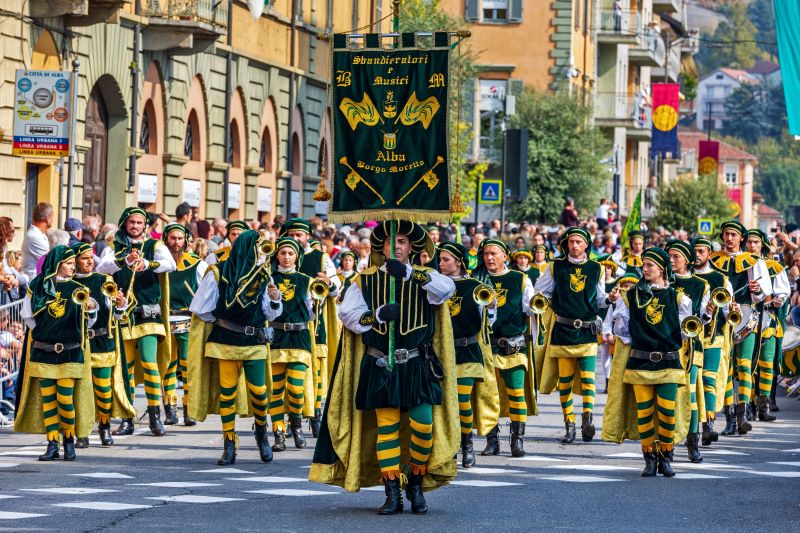
These holidays and traditions showcase the vibrant cultural mosaic that is Italy. Whether it's the solemnity of Easter, the exuberance of Carnevale, or the warmth of family gatherings during Christmas, each celebration reflects Italy's deep-rooted connection to its history, its people, and its diverse regions. As you plan your visit to Italy, consider aligning your travels with these holidays to witness the country's vibrant traditions in full swing. Buone feste!
-> Don't skip this article: TOP 7 ITALIAN EVENTS
 Italian
Italian Spanish
Spanish French
French Chinese
Chinese German
German
